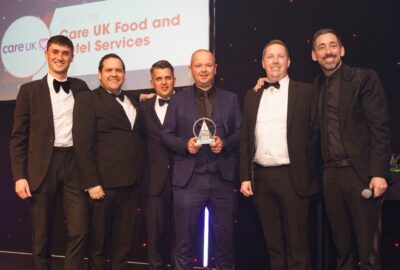With the rising number of vegans combined with people identifying as lactose intolerant, we’ve seen the dawn of a new era when it comes to milk.
Dairy consumption is declining as more and more people are shunning cow’s milk and opting for dairy free alternatives – with a vast array of products flooding into the market.
Retail sales of plant-based food and drink are at an all-time high, and now top £301million with one in three households buying these products every week. At the same time, one in three consumers are now regularly choosing a plant-based beverage out of home, so there is a clear pool of health-conscious and ‘balance-seeking’ consumers for foodservice operators to tap into.
Recent research by the Allegra World Coffee Portal reported that requests for soya out of home have levelled with requests for semi-skimmed milk amongst the under 25s (11% and 12% respectively) meaning that plant-based alternatives are a great way to drive valuable, millennial consumers into coffee outlets in particular.
Milk made from soya, almond, coconut, rice, hemp and hazelnut are all readily available, and it is vital that caterers incorporate dairy free into their offering.
But creating dairy free dishes isn’t as taxing as you might imagine. Dominika Piasecka, spokeswoman for The Vegan Society, said: “Many dishes can be made vegan simply by removing or swapping ingredients such as yogurt, milk and cheese. The animal -free alternatives are often more cost effective and environmentally friendly, too.
“Offering various plant milks in hot drinks is equally easy; dairy free products often constitute a safe food option for all dietary groups including the lactose intolerant, the health-conscious, vegetarians and those with allergies.
“Caterers should, in the first instance, examine the dishes they already offer on their menu that could be easily ‘veganised’ – sometimes all it takes is removing a pesky small amount of dairy to create a lovely vegan dish. A curry will be more delicious with coconut milk instead of dairy; oat or almond drink complements coffee just as well; and your customers won’t tell the difference if served a dairy free yogurt.”
Lactose intolerance
In order to digest milk, lactase must be present in the body to break down the sugar, or lactose, contained in it. It is estimated that 65% of human adults (and most adult mammals) decrease the production of lactase past weaning, and without it, milk consumption can lead to bloating, flatulence, cramps, diarrhoea and nausea.
The inability to digest lactose in milk is very common in some parts of the world. It occurs in around 90-100% of Asians, 65-70% of Africans, and 10% of Caucasians
Why go dairy free?
“There is a long-standing misconception that we need dairy milk for good health, especially for bones,” continues Dominika. “The human body needs calcium, rather than dairy specifically, to maintain good bones, and that can be obtained from plant sources.
“Comparisons between cow’s and plant-based milks are particularly favourable in terms of saturated fat, calories and nutrient value. Take a typical fortified soya milk made for coffee shops, for example, which contains 44kcal and almost 0g saturated fat per 100ml, with the same amount of protein, calcium and vitamins B12, D, riboflavin and E as cow’s milk. Compare this with the same quantity of whole cows’ milk, which contains more calories (66Kcal) and significantly more saturated fat (3g per 100ml).”
>>Click here to read the rest of the October 2018 issue of Stir it up magazine <<


